This article needs additional citations for verification .(December 2015) |
Edward Arthur Hegvold (1909-1991) was an architect in Rockhampton, Queensland, Australia. A number of his works are now heritage-listed.
This article needs additional citations for verification .(December 2015) |
Edward Arthur Hegvold (1909-1991) was an architect in Rockhampton, Queensland, Australia. A number of his works are now heritage-listed.
Edward Arthur Hegvold was born in Rockhampton on 2 October 1909, the son of Norwegian immigrants Ingebrigt (Albert) Hegvold and Annie (née Larsen). [1]
Hegvold commenced his architectural training in Rockhampton in 1924 as an articled pupil to Roy Chipps and continued in the employ of Chipps until 1935. During the depression, Hegvold and Chipps started Art Ads, a business designing advertisements and labels, along with lantern slide advertisements for local cinemas. Hegvold registered with the Board of Architects (Queensland) on 13 July 1933. From 1935-1938 Hegvold was employed as the manager of Tucker and Hall, Plasters and Tilers, Rockhampton. He opened his own architectural practice in 1938. In 1942, he was employed as an architect at the US Army Base Section 3 Rockhampton. He worked in the Engineering section designing aircraft hangars, warehouses and refitting many existing buildings for use by the army. He reopened his practice after the War.
In 1947 Hegvold won a design competition for the Crown Hotel in Rockhampton. In the 1950s, 1960s and 1970s his architectural practice in Rockhampton undertook civic, commercial and domestic work throughout Central Queensland. Buildings in Rockhampton include the Rockhampton Electricity Board, RACQ Building, Tobruk House, United Dominions House, YMCA/RCYA, World War 2 Memorial Pool and Riverside Caravan Park Amenities Block. In Central Queensland he designed the North Gregory Hotel Winton (with Engineer Jack Mulholland), Longreach Fire Station, Emerald Fire Station, Alpha Town Hall and Jericho Town Hall. From 1976-78 the firm became Hegvold Finlayson & Associates. The practice closed in 1980, but Hegvold came out of retirement in 1984 to design the new fire station and residence at Emu Park. [2]
Hegvold was a life member of many Rockhampton clubs including the RSL, Masonic Club, Bowls Club and Basketball Club. The North Rockhampton Bowls Club features the "Eddie Hegvold Bar" and the Hegvold Stadium used by Rockhampton Basketball Inc is named in his honour. [3] [4] He became president of Rockhampton Basketball in 1964, holding that office until 1969 when he stood down and became Patron of Rockhampton Basketball, a position he held until he died in 1991. He was responsible for planning, designing and organising to have the amenities at the Victoria Park basketball complex constructed. He also organised the Mayday Basketball Carnival in Rockhampton, building it up to become one of the most popular basketball carnivals in Queensland through the 1970s and 1980s.[ citation needed ]
Hegvold died in Rockhampton on 2 May 1991. [2]
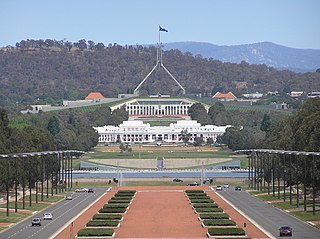
John Smith Murdoch was a Scottish architect who practised in Australia from the 1880s until 1930. Employed by the newly formed Commonwealth Public Works Department in 1904, he rose to become chief architect, from 1919 to 1929, and was responsible for designing many government buildings, most notably the Provisional Parliament House in Canberra, the home of the Parliament of Australia from 1927 to 1988.
James Birrell (1928-2019) was an architect responsible for the design of significant buildings in Queensland, Australia. James Birrell practiced from 1951 to 1986.
The Range is a suburb in the Rockhampton Region, Queensland, Australia. In the 2016 census The Range had a population of 5,400 people.
Thomas Pye was an Australian architect. He worked for over 33 years in the Public Works Department in Queensland. Pye contributed significantly to major buildings including the completion of the Public Offices and Rockhampton Customs House, as well as the design for the Lands and Survey Offices. He was responsible for the heightened expectations which produced the best public buildings yet seen in Queensland.

Parkhurst is a suburb of Rockhampton in the Rockhampton Region, Queensland, Australia. In the 2016 census, Parkhurst had a population of 2,476 people.
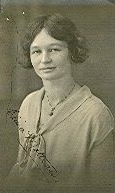
Elina Emily Mottram, (1903–1996) was an England-born architect trained in Brisbane. She was Queensland’s first and longest practicing female architect, practicing and establishing her own business in Brisbane from 1924 to 1975. Mottram died at the age of 93 in 1996.
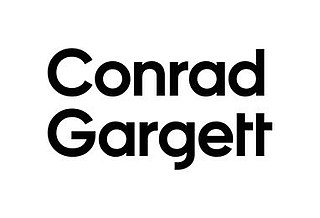
Conrad Gargett is an Australian architecture and design practice delivering expertise globally. It was founded in Brisbane in 1890 and is one of Queensland's oldest architectural firms.
Raymond Clare Nowland (1894-1973) was an architect in Australia. Many of his buildings are listed on the Queensland Heritage Register.
Albert Edmund Bates (1862—1929) was an Australian architect. Many of his works are notable; some are heritage-listed.
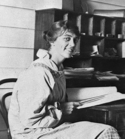
Beatrice May Hutton (1893–1990), also known as Bea Hutton was an Australian architect. On 30 October 1916, she became the first female to be accepted into an institute of architects in Australia. This followed the rejection of earlier female applicants, including Florence Taylor in 1907, on the grounds of being female.
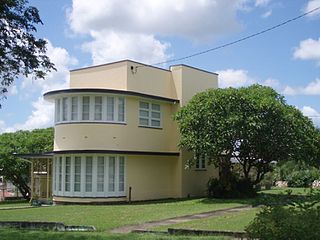
Amla is a heritage-listed detached house at 49 Jessie Street, The Range, Rockhampton, Rockhampton Region, Queensland, Australia. It was designed by Edward Arthur Hegvold and built in 1952 by Robert Leonard Schofield. It was added to the Queensland Heritage Register on 28 July 2000.

Bulletin Building is a heritage-listed printing house at 162-164 Quay Street, Rockhampton, Rockhampton Region, Queensland, Australia. It was designed by Roy Chipps and built in 1926 by R Cousins & Company. It was added to the Queensland Heritage Register on 5 December 2005.
Edwin Morton (Ted) Hockings (1870–1942) was an architect in Rockhampton, Queensland, Australia. A number of his buildings are now heritage listed.
John William Wilson was an architect and builder in Rockhampton, Queensland, Australia. A number of his buildings are now heritage-listed.

St Mark's Anglican Church is a heritage-listed former church at 36 Larnach Street, Allenstown, Rockhampton, Rockhampton Region, Queensland, Australia. It was designed by architect Louis Spier Robertson and was built in 1900. It was added to the Queensland Heritage Register on 28 July 2000.

Rockhampton Base Hospital is an historic hospital at Canning Street, The Range, Rockhampton, Rockhampton Region, Queensland, Australia. It was established in 1867. The hospital's medical superintendent's residence and Therapies Block were added to the Queensland Heritage Register on 21 November 1997.
Alfred Mowbray Hutton was an architect in Australia. Some of his works are heritage-listed.
James Flint was a British and Australian architect. A number of his works are heritage-listed.
Frank Cullen (1909-1991) was an Australian architect, who designed over 200 churches, school, monasteries, convents and other church related buildings in Queensland and Northern New South Wales, Australia
Charles Da Costa (1889-1974) was an Australian architect known for his work as a railway architect in Queensland. He specialised in reinforced concrete and structural steel designs.
Registration number: 1909/C9830